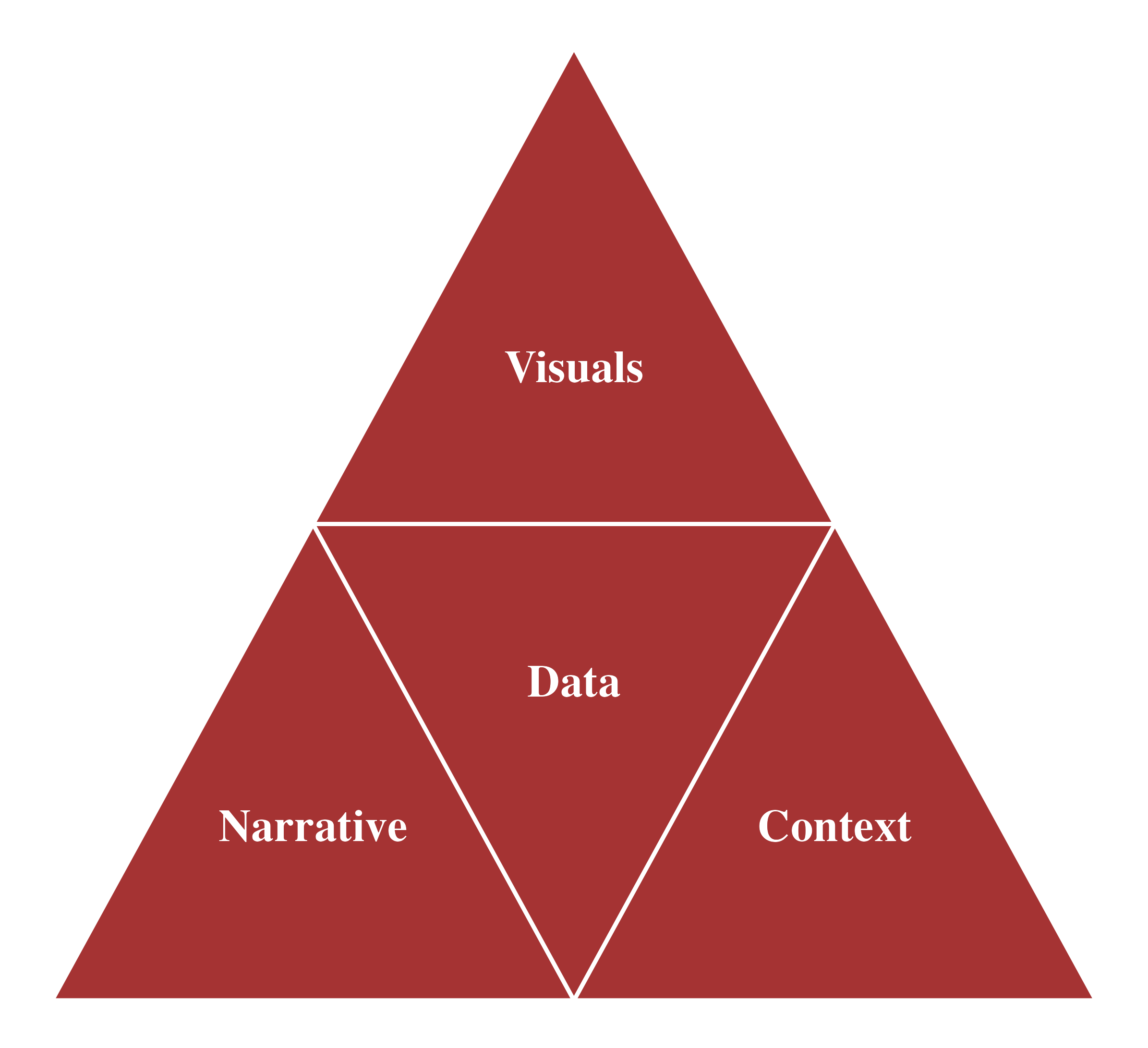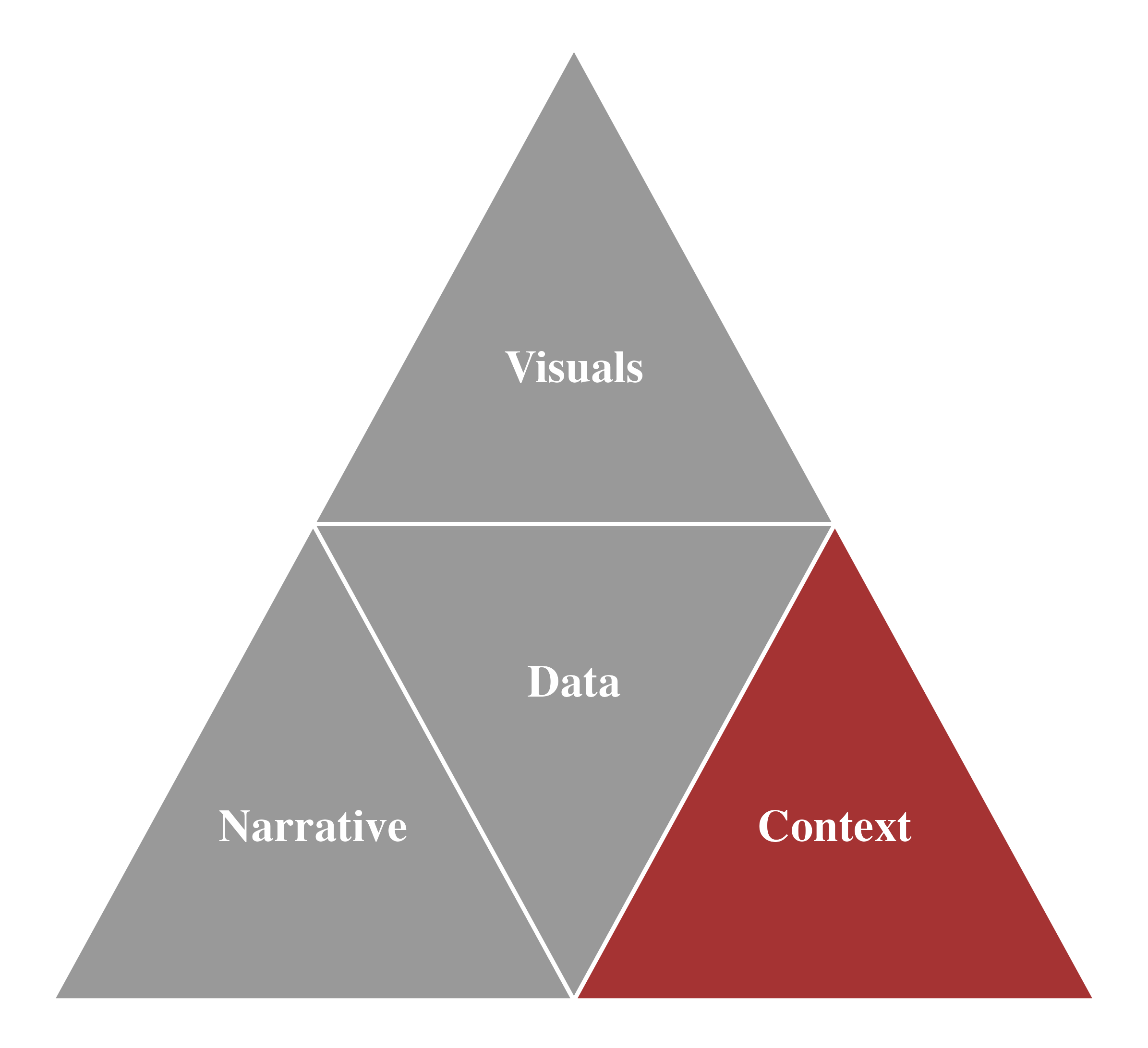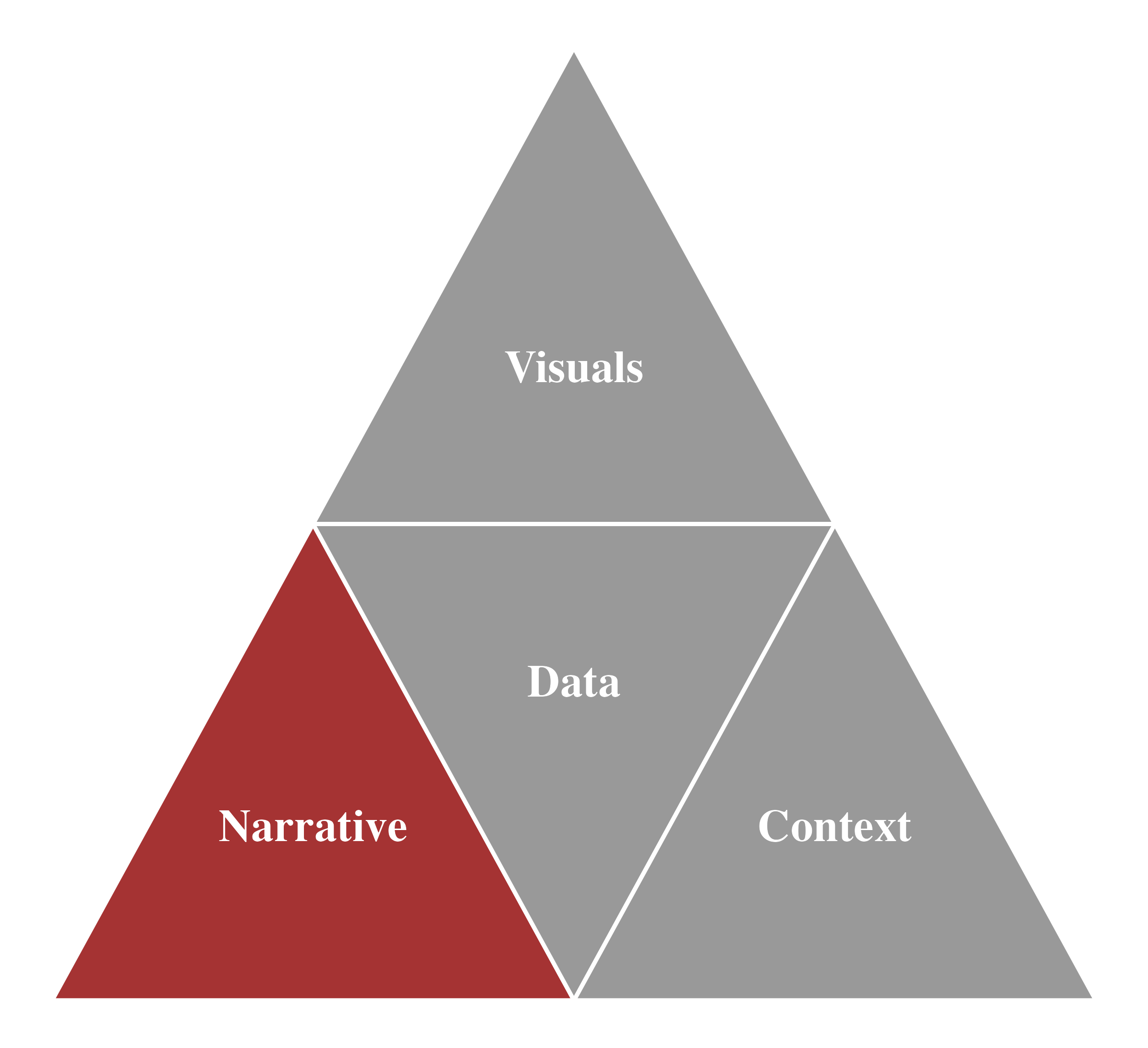Lecture 19
Data Storytelling
October 21, 2024
Data Storytelling
Data Storytelling
“The narrative is the key vehicle to convey insights, and the visualizations are important proof points to back up the narrative.” Ryan Fuller, Corporate Vice President, M365 Data Strategy at Microsoft
Data visualizations are useful for showing “what” is happening in the data.
- However, they often fall short in explaining the “why” and the “how” or providing the necessary context to uncover underlying reasons.
- Data Storytelling: Bridge the gap between data and insights by incorporating descriptive statistics, visualization, and narration within the appropriate audience context to effectively present your findings and drive data-informed decisions.
Data Storytelling

Data Storytelling

Data Storytelling
Context - Who, What, and How
- Before creating a data visualization or communication, it’s essential to spend time understanding the context behind your message.
- Who is your audience?
- What do you want your audience to understand or act upon?
- How will you present the data to effectively support your point?
Data Storytelling
Context - Who
- To whom are you communicating?
- Gain a clear understanding of whom you’re communicating with and how they perceive you.
- The more precisely you define your audience, the better you can tailor your message for successful communication.
Data Storytelling
Context - What
- What do you need your audience to know or do?
- Make your communication relevant by aligning it with your audience’s interests and needs.
- Clearly articulate why they should care about your message.
- Adopt a confident stance; as the analyst, you are the subject matter expert.
Data Storytelling
Context - How
- How would you present your data to help make your point?
- Use data as compelling evidence to build and tell your story.
- Choose data transformations and visualizations that effectively convey your message.
Data Storytelling

Data Storytelling
Understanding your data
- Prior to doing any storytelling or analysis, it is critical to understand your data and its limitations
- How was the information collected?
- What is the source of the data?
- What is missing variable from the data?
- What is missing observation from the data?
- What is missing value (
NA) from the data?
Data Storytelling

The Foundations of a Narrative
The 3-Minute Story & Big Idea
“I would have written a shorter letter, but I did not have the time.” - Blaise Pascal
- Purpose: Boil the “so-what” down to a concise statement
- Challenges: Being concise is often more difficult than being verbose
The Foundations of a Narrative
3-Minute Story
- If you had only 3 minutes, what would you say?
- Goal: Be clear and articulate the key message
- Useful in:
- Quick updates (e.g., elevator pitches)
- Shortened time slots (e.g., 5-minute briefings)
- Know exactly what to communicate and adjust to the time
The Foundations of a Narrative
Big Idea
- Must meet three criteria:
- Articulate your unique point of view
- Convey what’s at stake
- Be a complete sentence
The Foundations of a Narrative
Illustrative Example
- 3-Minute Story
- Science department initiative: Resolve issues with incoming 4th-graders’ negative attitudes toward science
- Piloted a summer learning program with 2nd and 3rd-graders
- Survey results: Significant improvement in positive perceptions toward science
- Big Idea
- “The pilot summer learning program was successful at improving students’ perceptions of science, and we recommend continuing and expanding it.”
The Foundations of a Narrative
Storyboarding

- Provides a visual outline for content structure
- Allows flexibility and adjustment
- Seek stakeholder buy-in at this stage
The Foundations of a Narrative
Summary
- Concise communication is powerful and challenging
- Use the 3-minute story and Big Idea frameworks to clarify your message
- Storyboarding ensures content is well-structured and adaptable